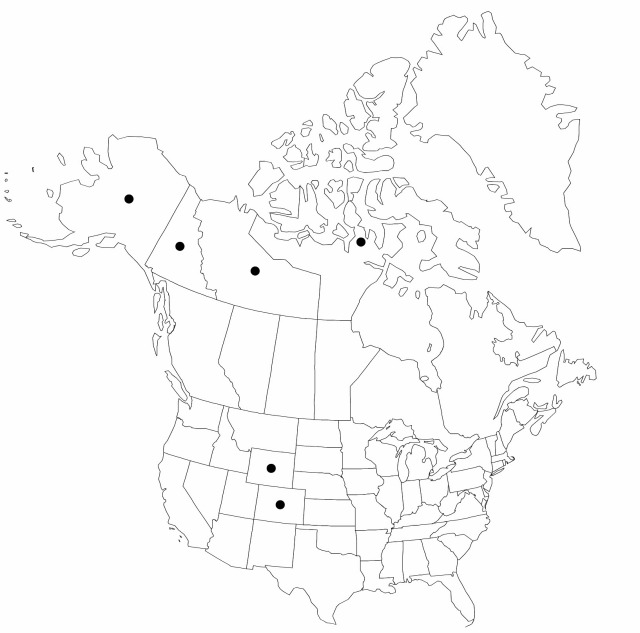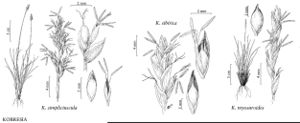Difference between revisions of "Kobresia sibirica"
Linnaea 39: 7. 1875.
FNA>Volume Importer |
FNA>Volume Importer |
(No difference)
| |
Revision as of 19:08, 24 September 2019
Culms 5–40 cm. Leaves: basal sheaths somewhat glossy, bladeless; blades filiform, 2–15 cm × 0.25–0.5 mm. Inflorescences simple, 10–20 × 4–8 mm; proximal spikelets usually androgynous with 1–2 staminate flowers, 1 pistillate flower, and 1–3 scales; distal spikelets staminate, 1-flowered. Scales brown, obovate-circular, 3.5–5.5 mm, midvein distinct only near base, margins hyaline, apex obtuse. Anthers 2–3 mm. Perigynia brown, finely veined, 3.5–5.5 mm, margins connate near base. Achenes 2.6–4 mm.
Phenology: Fruiting summer.
Habitat: Dry to mesic tundra
Elevation: 0–3600 m
Distribution

N.W.T., Nunavut, Yukon, Alaska, Colo., Wyo., c, n Asia.
Discussion
Kobresia sibirica, a local and variable species, is not yet fully understood. Some authors consider K. hyperborea and K. macrocarpa to be distinct endemic North American species; other authors include those and K. sibirica in the southwest Asian species K. schoenoides (C. A. Meyer) Steudel. In the Asian plants, the androgynous spikelets are reported as having 3 staminate flowers and no sterile scales.
Selected References
None.
